Introduction
Traveling the world as a digital nomad with kids might seem daunting – and let’s be real, it is! But with the right strategies, you can feel prepared to take the plunge as a family.
In this guide, I’ll walk you through everything you need to know about adopting a digital nomad lifestyle as a family, from getting in the right mindset, to logistics planning.
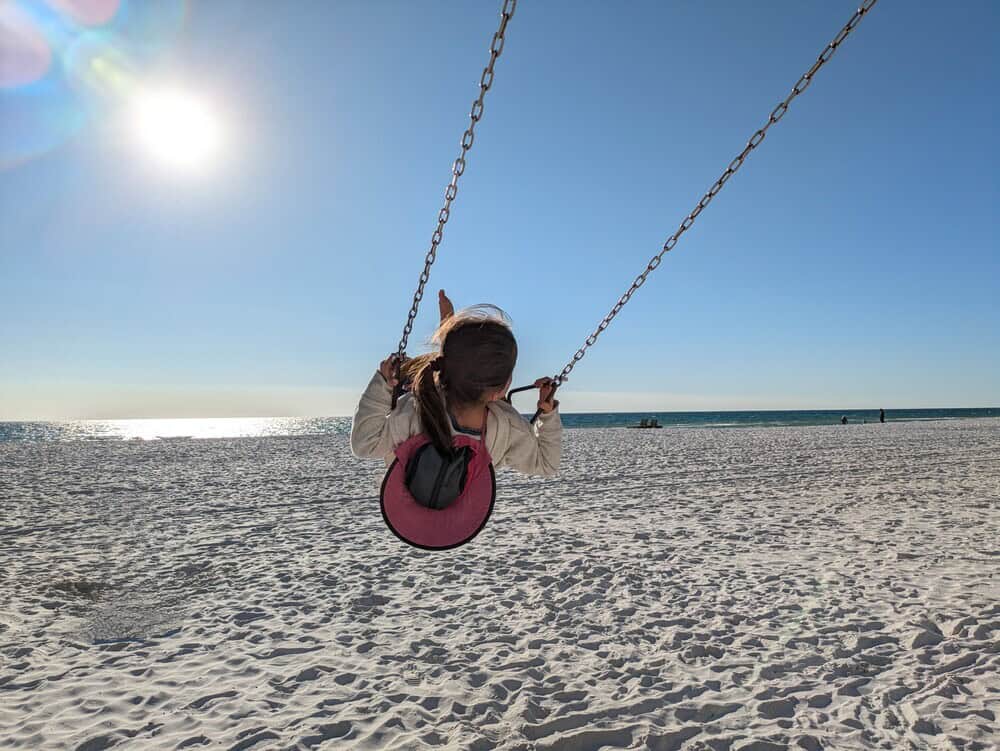
Why Choose the Digital Nomad Lifestyle as a Family
Benefits of being a digital nomad family
Although this post is about how to become a digital nomad with kids, you may be wondering why you would even want to do that in the first place.
Let me share some benefits of this lifestyle that I’ve experienced myself, and learnt from other families.
Education and growth opportunities for kids
A digital nomad lifestyle gives kids unique opportunities to learn, grow and develop. Spending time in different places allows them to experience different cultures and environments firsthand.
These experiences can form the basis of life lessons as parents encourage their kids to reflect on what they see. This can foster respect for different ways of life, increase their empathy for people different from themselves, and as they get older, prompt them to think about the challenges facing our planet.
These firsthand experiences can also be incorporated into their education, bringing what they learn to life.
A great example of this is language-learning – being immersed in an environment where everyone is speaking the language you’re trying to learn makes it much more likely that kids will pick it up – and adults too!
Young children have that instinct to communicate, and it’s amazing to watch them absorb language like a sponge.
Spending time in places where people may not have all the conveniences that we take for granted teaches them to appreciate things more. It teaches parents the same thing – I will never take for granted a nice hot shower with good water pressure ever again!
I personally find that a digital nomad lifestyle gives me the opportunity to teach my daughter values as well, and challenges me to live my values. For example, minimalism and valuing people and experience over things.
Also, the benefits of getting out of your comfort zone and challenging yourself to try new things. There are also ample opportunities to practice resiliency, adaptability and problem solving.
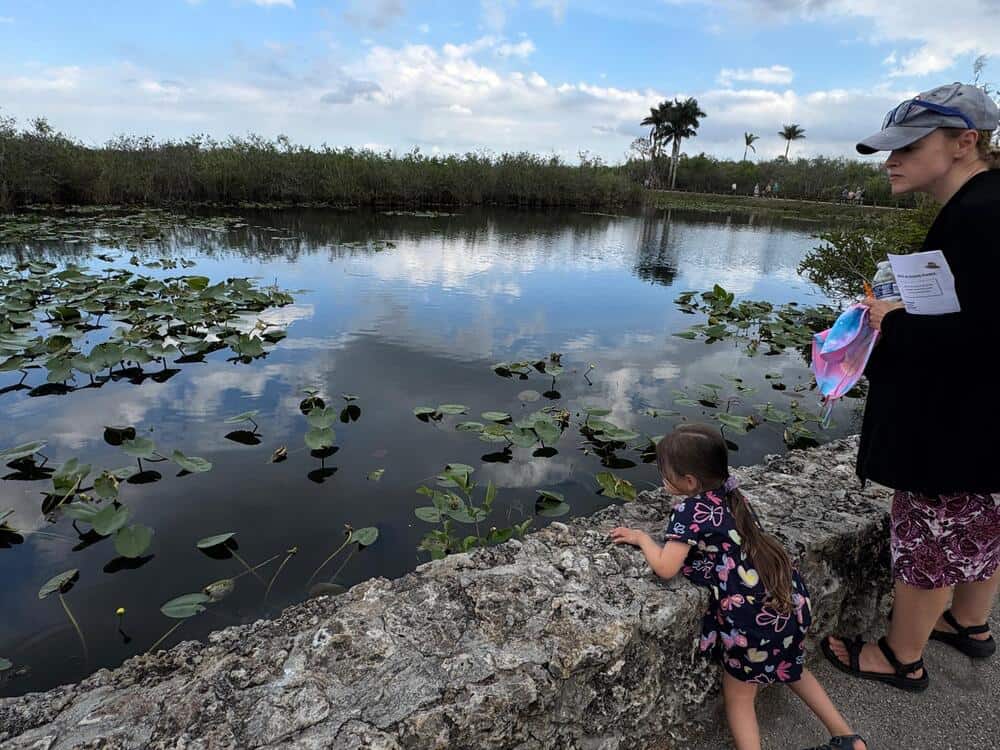
Flexibility and autonomy for kids and parents
As a digital nomad, you’re free to design schedules and lifestyles that fit your needs, rather than being dictated to you by someone else.
While other families have to endure the crowds and cram their vacations into the school holidays, you’re free to visit on the off-season and fly on a week day.
You can choose the climate that suits you best, and move from place to place as the seasons change.
You can also build your travel itineraries around your kids’ interests and learning needs.
For us, this flexibility also allows us to see more of family, as we have relatives all over the world. It would be really hard to spend time with all of them if we were constrained by a regular school schedule.
Of course, with kids there is a need to balance flexibility with structure. I know some people considering this lifestyle worry about that, but there are ways to build structure and routine into this lifestyle.
Personal Growth opportunities for parents
If you’re already considering this lifestyle, this may go without saying – but being a digital nomad with kids has benefits for parents too!
For one thing, it allows you to scratch that travel itch. This is a very personal decision, but for me, my life feels so much more fulfilling with new destinations and experiences to look forward to.
As I mentioned, it also pushes you to grow. Breaking out of the 9 to 5 routine and taking the risk of being a digital nomad with kids is not easy, and taking the plunge requires courage.
Depending on your line of work, being location independent could also allow you to expand your professional networks and develop new skills required for working remotely.
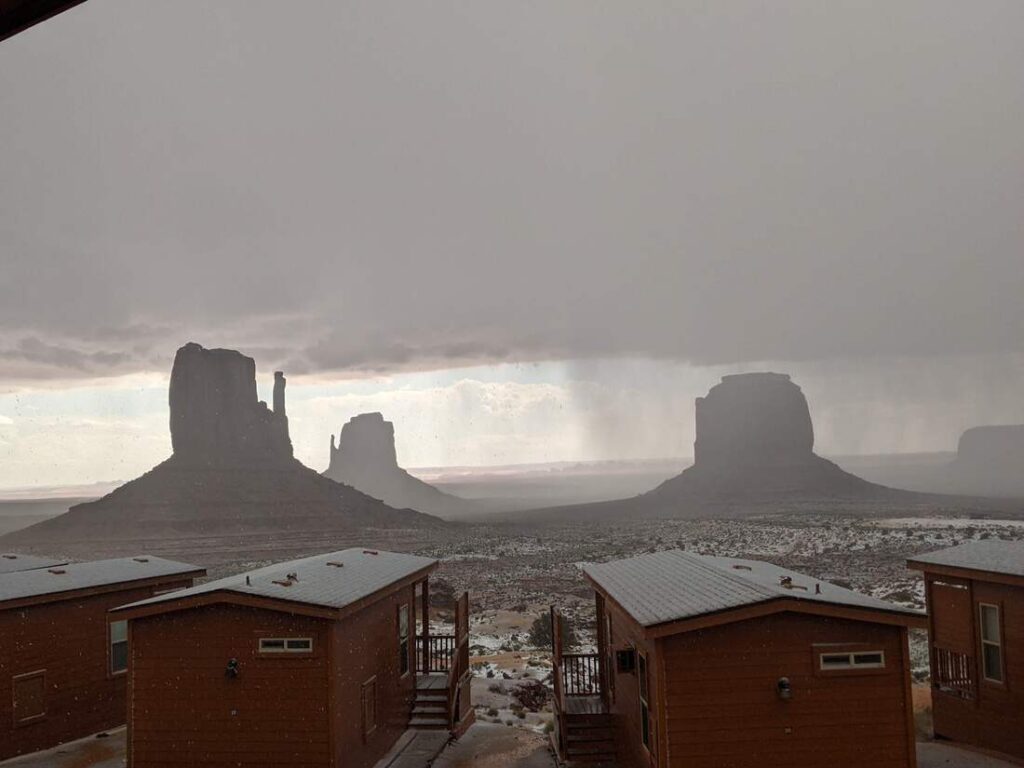
Strengthens Family Bonds
I hear people talk about this one a lot – just how much they value the amazing memories created through shared adventures on the road.
And not only shared fun, but shared challenges and getting through these together.
I also really appreciate the flexible schedules of working and parenting on the road – this can lead to more quality time together as a family.
Financial Benefits
This one might surprise you. Many assume that traveling the world full time must cost a huge amount of money. It can for sure, but it doesn’t have to.
If cutting expenses is important to you, with careful planning you can choose places that offer a lower cost of living than your home country.
Now that you’re hopefully inspired that this is worth doing, let’s jump into some of the nitty gritty of making it happen!
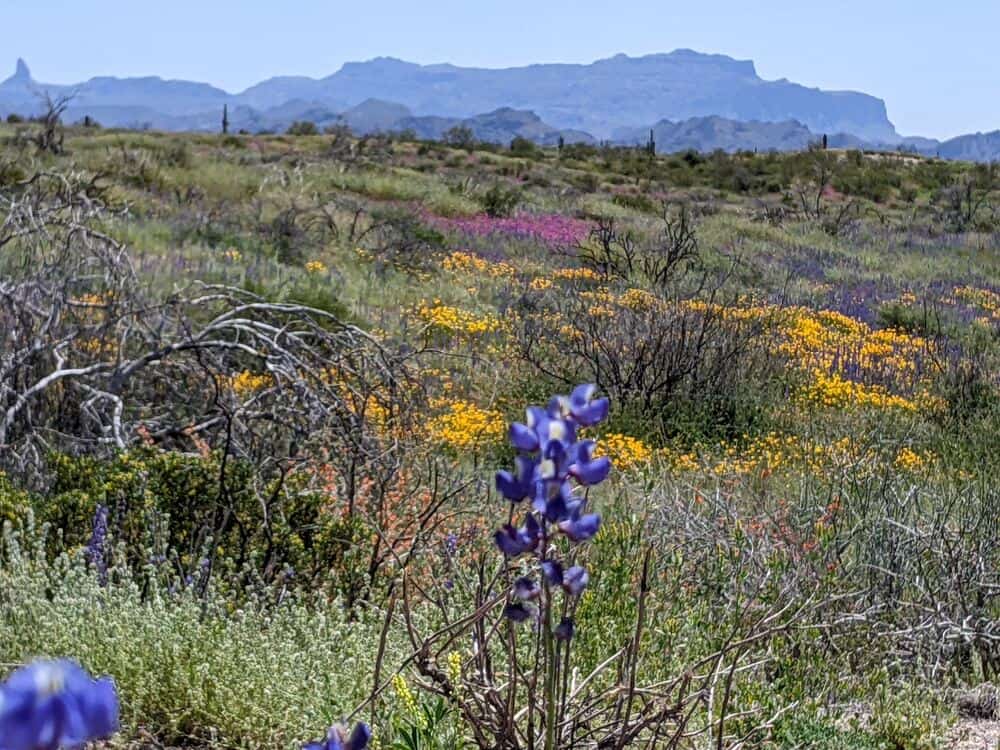
Tips for planning your life as digital nomads with kids
Before I jump into the logistical stuff, I have a few tips on getting your mindset right.
Figuring out the logistical stuff is important, but avoiding burnout and making this lifestyle sustainable is more about mental planning and family discussion, than logistical planning.
1. Find your ‘why’
If you want to succeed at being a digital nomad with kids, this is the most important part of your preparations, in my opinion.
Because this lifestyle does come with a lot of challenges, and if you don’t know why you’re doing it, you may give up when things get hard.
On the other hand, if you’re intentional about what your goals are, you can keep your focus on those, and enjoy the adventure for years to come.
There are many different things that motivate people to try this lifestyle.
For me, one of my big goals was to get out of the long, cold winters of Chicago, which had taken a toll on my mental health.
So when we run into challenges – like if it’s a moving day and I’m tired and we’re scrambling to check out on time and my daughter is having a tantrum – I look at my weather app and see what the weather is in Chicago. Negative 10 with windchill? Ok, hectic moving day doesn’t seem so bad anymore!
Finding your motivation can help you get through the tough times as well.
2. Set realistic expectations
Watching other traveling families on YouTube or Instagram is inspiring, but it can create unrealistic expectations of what this lifestyle is like.
If you expect a life of happy smiles in a new exotic destination every week, you’ll probably be disappointed.
The same parenting challenges you would face at home will be with you on the road, and could be harder.
Also, all the planning involved in this lifestyle – researching routes, accommodations, activities, safety, childcare etc. – is time-consuming, especially at first.
I have found that once you’ve done it for a while you become faster, but it still takes time. That’s why for us, slow travel has been a better fit, as there is a bit less planning when you’re moving less frequently.
These kinds of challenges are why I say it’s important to know why you want this lifestyle and want you want to get out of it.
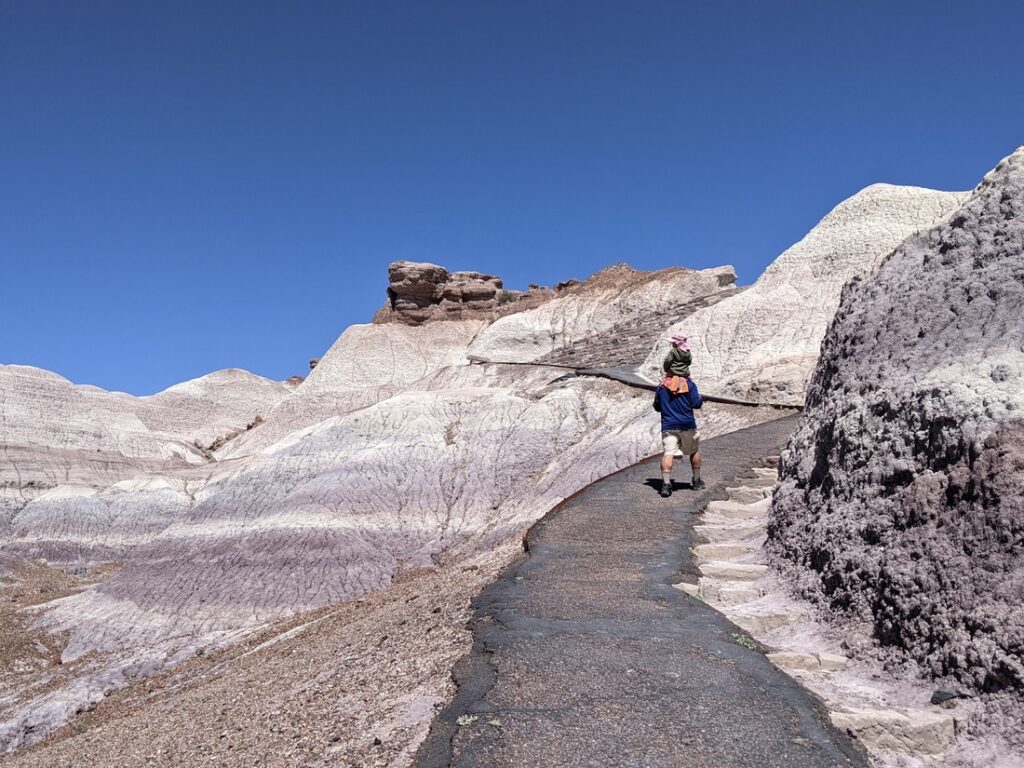
3. Figure out what kind of digital nomad you’ll be, and take the plunge!
There are many different approaches to being a digital nomad with kids.
Some families travel super light, and stay in hostels or campgrounds. Others like to live in more luxurious accommodations with more of the comforts they’re used to.
Some move every week or so, while others like to spend extended periods of time in regions and explore them in depth.
Some keep a home base with periods of extended travel, some give that up for permanent life on the road.
There is no one-size-fits-all and you need to discuss as a family what you’d like to try.
I recommend taking an experimental approach – take a few trips, try out different styles of being a nomad, and see what you like best.
Making a digital nomad bucket list as a family can also be a great way to get people excited. If it’s age appropriate, make sure to involve your kids in the planning.
Our daughter is 3 right now, and she loves looking at Airbnbs with us and giving her opinion (if they have bunk beds, she’s basically sold).
Then, once you’ve decided that this is something you want, set a date to leave. It makes it feel real and motivates you to take action and stop procrastinating.
For us, it was when our lease ended. We had to be out of there, so that was the perfect time to start our life on the road!
Now that you’re in the right mindset, let’s dig into planning!
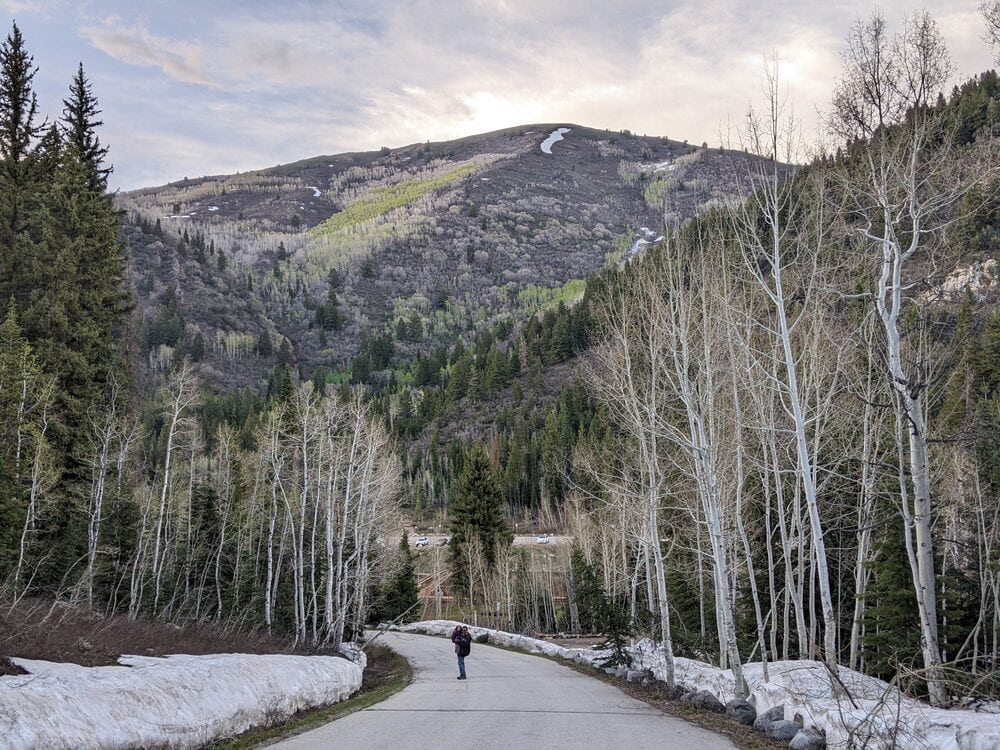
Education While Traveling
As you prepare to become a digital nomad with kids, you’ll want to consider how you want to educate your kids as you travel.
There are three main options to consider, which can overlap: Homeschooling, online schools, and world schooling. Each have pros and cons to weigh.
- Homeschooling:
This is where you and/or your partner play the role of the teacher.
One benefit is that you can have more control on what is taught and how. This could be a good choice if you have time to teach and want to be in control of how to integrate travel experiences into what your child is learning.
Homeschooling also gives you flexibility that can help when traveling (for example, you can travel on a week day, rather than being bound to a traditional school schedule)
- Online schools:
Here your child enrolls in a program that is similar to a traditional school, but online.
Education is more structured, and the teachers are certified. This could be a good option if your child does well with consistency and routine, or if you don’t have time to play the role of teacher.
It can also help if you plan for them to return to a formal schooling system.
- World schooling:
This focuses on providing education through cultural immersion and hands on experiences. It can be combined with the other two approaches.
For example, you could teach your child/children yourself, but incorporate cultural immersion into the curriculum.
Or you could alternate between teaching them yourself and enrolling them in face-to-face world schooling hubs with a certified teacher.
There are also different varieties of world schooling to consider – short-term pop-up ‘hubs’ in different regions, longer-term hubs (a well-known example is Boundless Life), and even groups of families traveling together with a teacher for a fixed period of time.
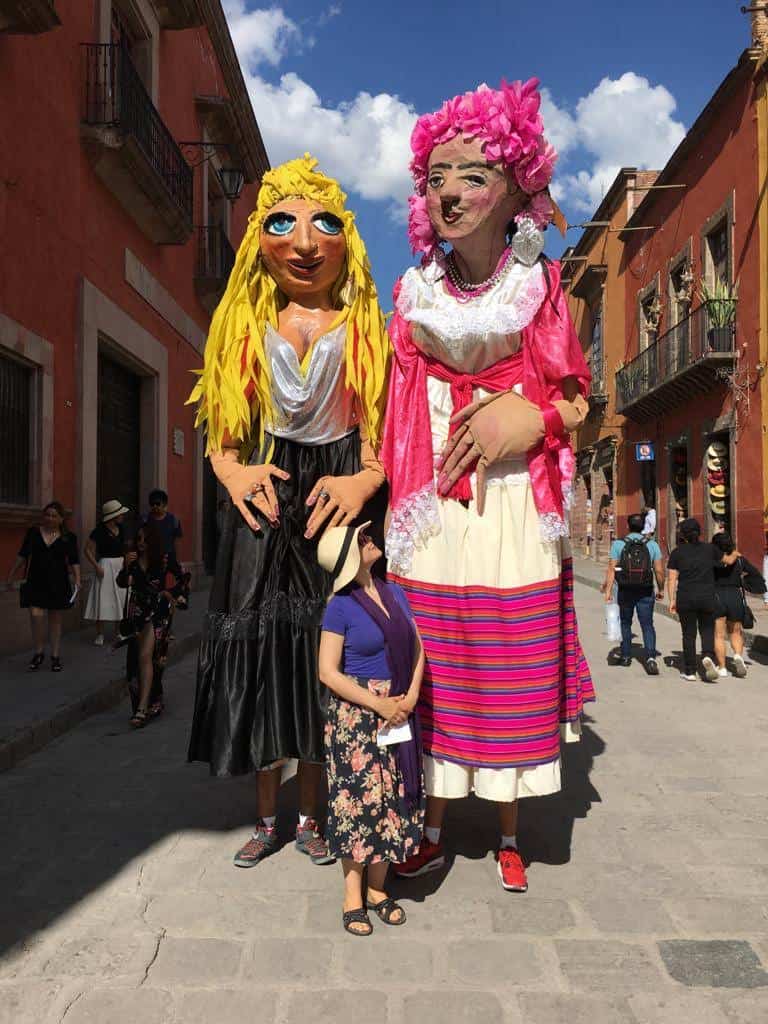
Preparing for Life as a Digital Nomad with Kids
Figure out your finances:
As a parent, I wanted to feel sure that we could support my daughter before even considering taking the plunge and becoming location independent.
An important part of this was figuring out our finances.
The first step is to track your current expenses. Understanding where your money goes currently can help you in two ways.
First, you can see opportunities where you can cut costs so you can save more to fund your nomad lifestyle down the line.
Second, you can see expenses that would continue as a digital nomad (for example, saving for your child’s education) and those that you would no longer have (for example, rent).
The second step is to track your income streams so that you know what you can afford.
This should include your paycheck, any passive income like dividends, and any savings you plan to use to fund your lifestyle.
Having multiple income streams can help you feel more secure as you start your adventure.
If your current job is not remote and you want to explore ways to earn money remotely, consider trying this out as a side hustle to see how much income it can generate.
Once you know what you’re spending, and how much money you’ll have coming in, you need to create a budget for digital nomad family life.
This can be tricky because expenses on the road can vary so much, depending on your lifestyle, the country you’re traveling to, and how often you move.
Researching other digital nomad families’ budgets on YouTube and blogs helped us to get a sense of the variety of options. Tools like Numbeo, as well as Digital Nomad forums on Facebook and Reddit, can help you research the cost of living in destinations you’re considering traveling to.
I’ve found that there are more digital nomads with kids on Facebook than Reddit, but Reddit can still be helpful for assessing cost.
Here are some tips to keep in mind when creating your budget:
- Make sure to include housing, food (groceries vs eating out), transportation, travel insurance, work expenses, child-related costs, entertainment and leisure, as well as the amount you want to keep adding to your savings and investments.
- Factor in one-time setup costs – Initial flights to the area where you want to be based, digital tools or equipment (laptops, cameras, travel adapters), and visas.
- Factor in seasonal cost fluctuations (eg. High and low season) Traveling to a destination in high season or around a holiday can really push up the cost of accommodation. On the other hand, visiting during shoulder season or off season can make it much more affordable.
- Consider exchange-rate fluctuations as well – this really got us in Mexico! When we visited the first time, the peso was around 20 to the dollar, and when we returned it had dropped to 16. Way fewer fish tacos! Make sure you build in lots of wiggle room to account for these kinds of things.
- Consider balancing time in expensive places with affordable places to balance a yearly budget.
- As you plan, make sure to include an emergency savings buffer – this should be enough to cover 3-6 months of expenses if anything unexpected comes up.
For us, we wanted a test run to make sure we could actually afford to do this full-time.
This can help you feel confident that life on the road is the right decision for your family.
Tools like Mint or YNAB can help you track your expenses and make sure you’re staying on track.
After your trial run, you can review what you spent, and make any necessary adjustments to the budget.

Logistics to consider when planning to be a digital nomad family
Downsizing your belongings
The thought of downsizing can be daunting. Give yourself a LOT of time (more time than you think you’ll need), and break it down into manageable chunks so minimize stress.
Even starting with one drawer or cabinet can give you a sense of accomplishment without being overwhelming.
Probably one of the toughest parts of downsizing is deciding what to keep and what to give away or dispose of.
There are a lot of approaches to this, and no one size fits all. Some digital nomad families keep a large number of possessions in storage, whereas others love the freedom of having nothing to tie them down anywhere.
We probably leaned more towards keeping too much – things we’ve never used since we started life on the road.
I would feel huge anxiety that I would give something away and then need it later. But sometimes it’s more affordable to buy the thing later, rather than spend money on storage every month.
However, if it makes you feel less anxious, you can always keep it and get rid of it later if you don’t use it.
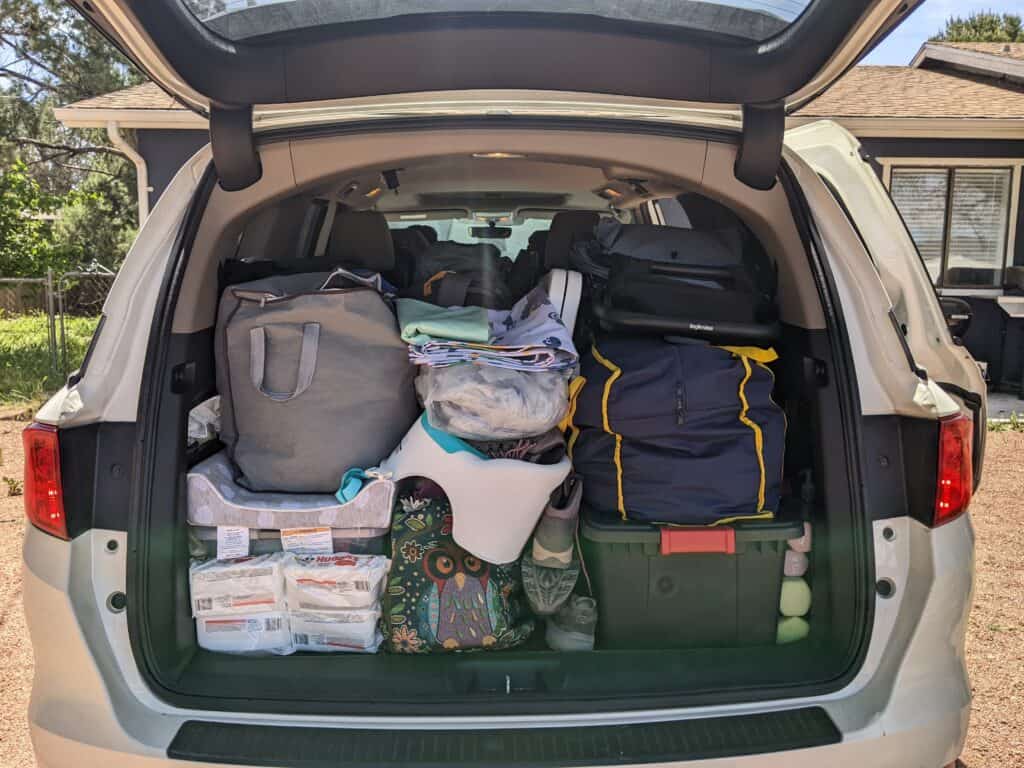
Visas
Of course, you’ll want to make sure you know the legal requirements for working in the countries you’ll be visiting. This will vary based on your nationality, the specific country, how long you’ll be visiting, and the kind of work you do.
Something that surprised me was that in general, most countries do not allow individuals to work for a foreign employer while on a tourist visa.
It seems from the Facebook groups that a lot of people do this anyway – but always do your own research on what the regulations of your destination country are.
Citizen Remote and Global Citizen Solutions offer a detailed breakdown of digital nomad visa requirements and the application process for different countries. They offer a paid service if you want to relocate to another country but both have a lot of helpful free info on their website too.
Following YouTube channels like Nomad Capitalist can keep you up to date on new programs and tax benefits (although their audience is more the super wealthy than the average digital nomad, I still find the information helpful).
Some notable digital nomad visas that allow family members (spouses and dependent children) to join the main visa applicants include Portugal, Spain, Italy, Greece, and Malta.
The requirements related to areas such as finances and health insurance vary for each of these, so make sure to check the specific requirements for the country you’re interested in.

Vaccinations
Checking vaccination requirements may not be on your radar (it wasn’t on mine when I started planning my digital nomad life), but they are important for a few reasons.
They can protect you and your family from serious diseases like yellow fever, hepatitis, and typhoid, which are prevalent in certain regions.
They also protect local communities from the spread of infectious diseases. And some countries require proof of specific vaccinations, like the Yellow Fever certificate, for entry.
Here are a few tips to make it manageable:
Make sure you’re checking reliable sources for the latest info, such as the immigration or health ministry websites of the countries you want to visit. The CDC and
The World Health Organization also offer reliable vaccination guidance. Travel Clinics in your home country can also be a good resource.
Keep in mind that to protect your kids when traveling, you should start vaccinating them well in advance, so the vaccine has time to take effect.
Also, be aware that some vaccines require more than one dose. Check with a healthcare professional for the exact requirements.
Make sure your child is up to date on routine vaccines like MMR, as well as any specific vaccines required for the region you want to visit.

Taxes
The taxes you owe as a digital nomad will depend on your citizenship, the countries you’re visiting, and how long you spend in each of them.
If you’re a US citizen, you need to file taxes no matter where in the world you are, if your income exceeds a certain amount (check the threshold for the particular year you’re filing).
The Foreign Earned Income Exclusion and Foreign Tax Credit can help minimize the taxes you owe back in the US.
Some host countries require you to file taxes if you stay over 183 days or establish residential ties. However, depending on the country, tax treaties may prevent double taxation (having to pay taxes to two countries).
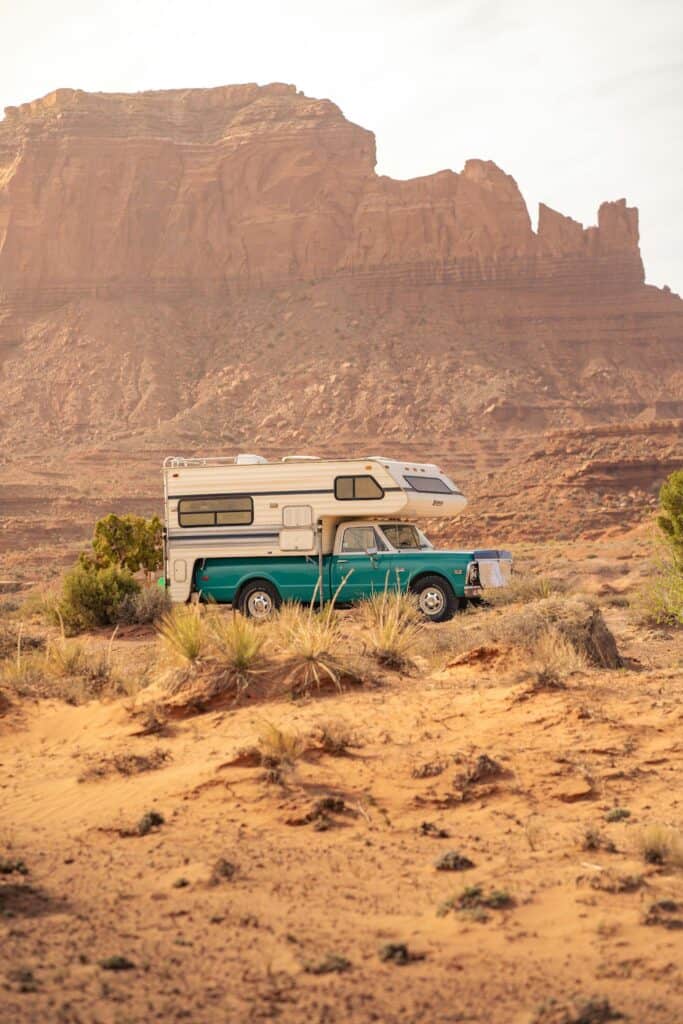
Healthcare
Of course, when choosing the countries you want to visit as a digital nomad with kids, you’ll want to pick places with affordable, quality healthcare for the whole family.
When researching healthcare options, consider differences between public versus private healthcare – who can access these, and how the cost and quality may vary.
My approach was to narrow down the countries I wanted to visit and do in-depth research on those.
As with many things, Expat Facebook groups can be a great resource for this, providing you with first-hand recommendations and experiences.
If you’re coming from the US, the experience of getting healthcare in other countries broadens your perspective in and of itself. The idea that you can afford to pay out of pocket for routine healthcare expenses is just mind-blowing for many people.
However, for emergencies you’ll want to consider insurance – either travel or l health insurance. For some top options to consider, see my post on top resources for digital nomads with kids.
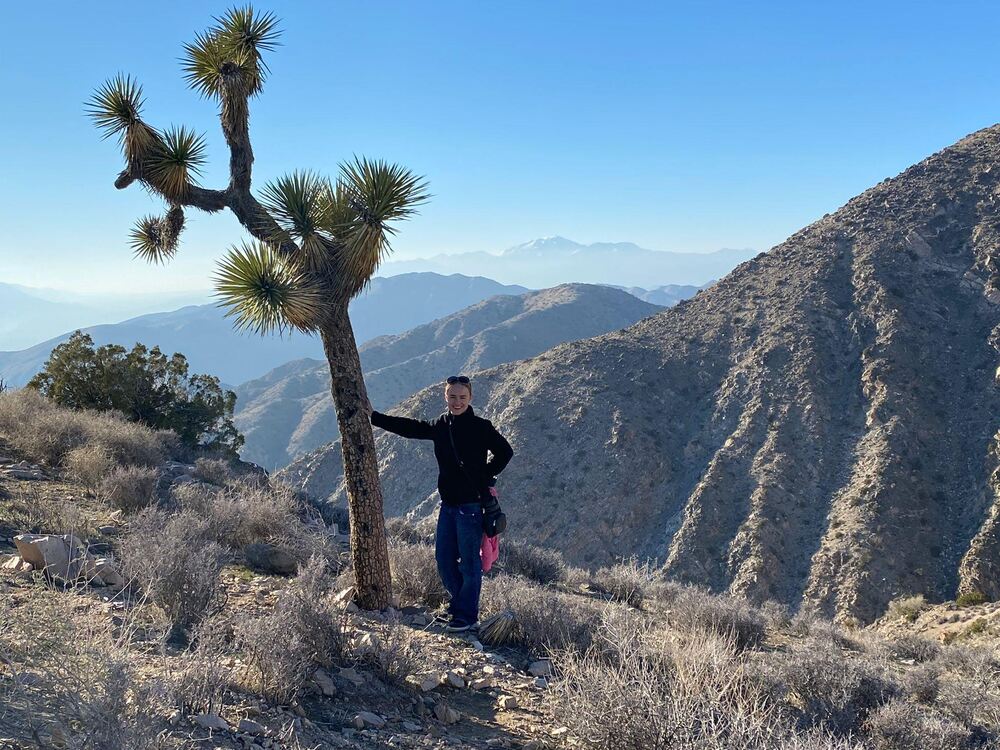
Staying connected (phone plans etc)
While you’re traveling, you’ll want to find the best options for staying connected to people back home. There are a few things to consider here:
Making and receiving phone calls:
Start by checking international plans on your current provider to see if these could be an option.
For US residents, check if they have restrictions for being outside of the US for too long.
Also check if they allow WiFi calling (so you can avoid international roaming charges).
If you’re considering switching providers, US Mobile and Tello are two I hear recommended a lot.
Whatsapp calling or Facetime is an alternative option to making a traditional phone call.
For making calls, another option is to use Skype – there are both subscriptions and pay as you go options.
Receiving text messages
This is important to consider for things like logging into your account for financial institutions.
If you are considering a provider in your home country, check whether they allow you to receive texts internationally for free (many do).
For banking, some institutions allow you to choose to receive a code via email to log in, which can be easier.
I’ve heard people port their mobile number to Google Voice, but be aware that Google Voice may not support receiving a text message to log in for banks (also called 2FA/MFA).
There have also been reports of people’s accounts getting suspended if they are outside the US for too long.
Data on your phone:
Having internet data on your phone is useful for when you’re not connected to WiFi. Here you also have a few options.
If your phone works with an eSIM, you can purchase one of these in advance that provides access to data in the region you’ll be visiting.
This video provides a good overview of the best eSIM choices to consider.
If your phone is not compatible with eSIM, you can purchase a physical SIM card at the airport when you arrive.
If you have a dual SIM capability you can keep your SIM card from your home country and have an international one, and switch between them as necessary – this is an option for both physical SIMS and eSIMS.
Overall data security: Consider getting a VPN for doing banking on your computer to prevent any issues accessing your accounts.
This also helps if you want to access streaming services like Netflix and see the same content that you do back home.
Keeping an Address and Receiving Mail
For US residents, If you choose to sell your home, you have the option of establishing domicile in other ways
This video gives a helpful breakdown of things to consider when choosing a domicile.
Important for digital nomads with kids is the homeschooling regulations, which can vary a lot by state.
If you don’t have a family member that can receive mail for you, there are paid services that open and take photos of mail for you, such as Escapee’s RV Club.
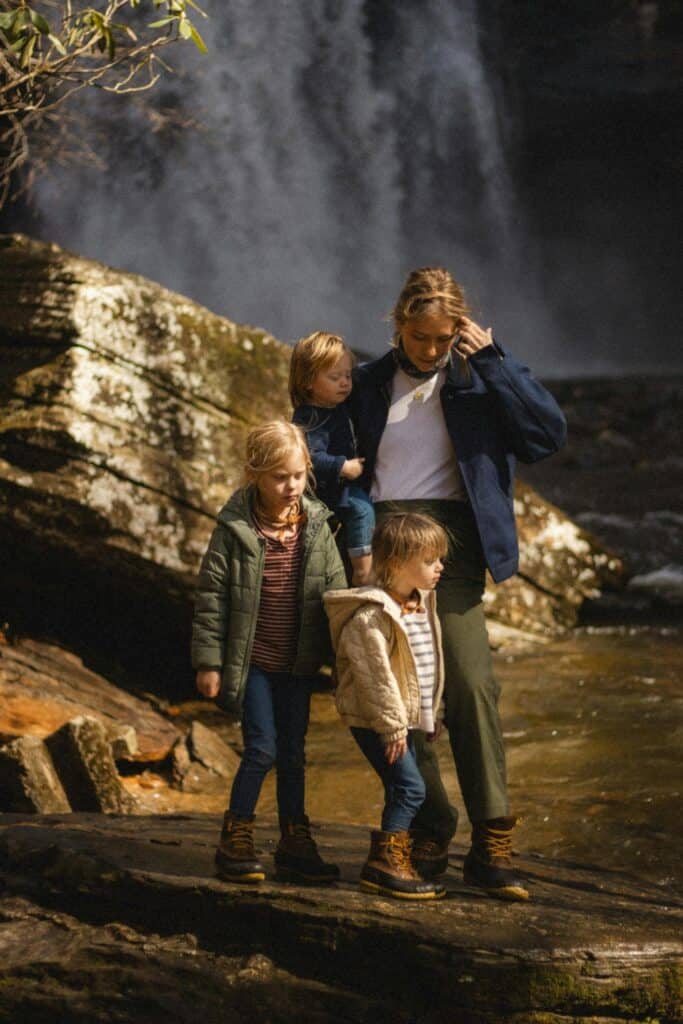
Choosing the right destinations
For your first destinations as a digital nomad with kids, you’ll want to choose somewhere that will make the adjustment to this lifestyle as easy as possible.
What that will look like will vary from family to family.
Some things to consider:
- Do you speak the language?
- Is the visa easy to apply for?
- Is there already a community of nomads with kids that you can plug into? (a world schooling hub, for example).
- Is there a good infrastructure to make working on the road as easy as possible?
- Is it close enough to your home country that you’ll feel secure that you can return if you need to?
- Is it in a similar timezone (not having to deal with jetlag with young kids is always a plus!)
You can also pick places that you have visited before and you know you enjoyed, or places that you (or your kids or partner) always wanted to see.
Some popular digital nomad family destinations that balance safety, healthcare access, affordability and family-friendly amenities include Spain, Portugal, Greece, Thailand and Costa Rica.
In addition, safety is obviously important and it’s important to do some research.
If I’m considering adding a location to my list, I check the state department website for any alerts. I do feel like they err on the side of caution, but it is good information to have.
Remember, part of the fun of travel is to embrace the unknown, so a destination doesn’t have to be perfect to be worth experiencing!

Packing essentials for kids
There’s packing light, and then there’s packing light with kids. Not easy! Especially if you have very young kids.
Sometimes there is gear you feel makes such a difference to your quality of life, that you don’t want to consider giving it up. I get it.
However, it can be freeing to realize you’re okay without the things you thought you couldn’t live without.
This can also be a way to teach your kids minimalist values, if that’s something that’s important to you. We have a policy where if our daughter wants a new toy, she has to choose an old one to donate.
Conclusion
Becoming a digital nomad with kids is a journey.
There will be challenges for sure, but if you take it slowly, stay flexible, and always remember your ‘why’ for choosing this nomadic lifestyle, it will be so worth it!
If your dream is to create a life of adventure and growth for your family, you can do it! Want to learn more? Read about the top resources for digital nomads with kids next.



